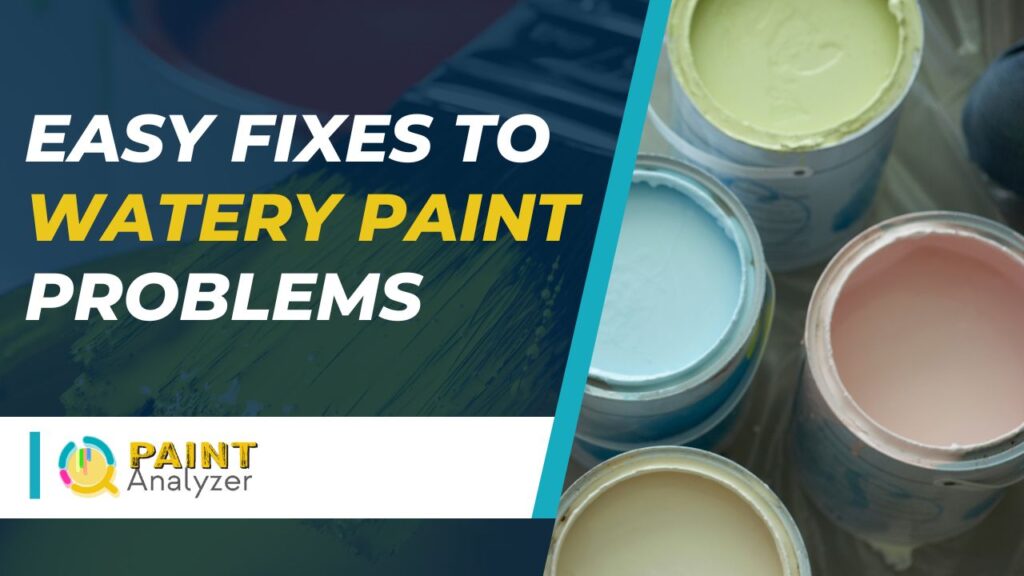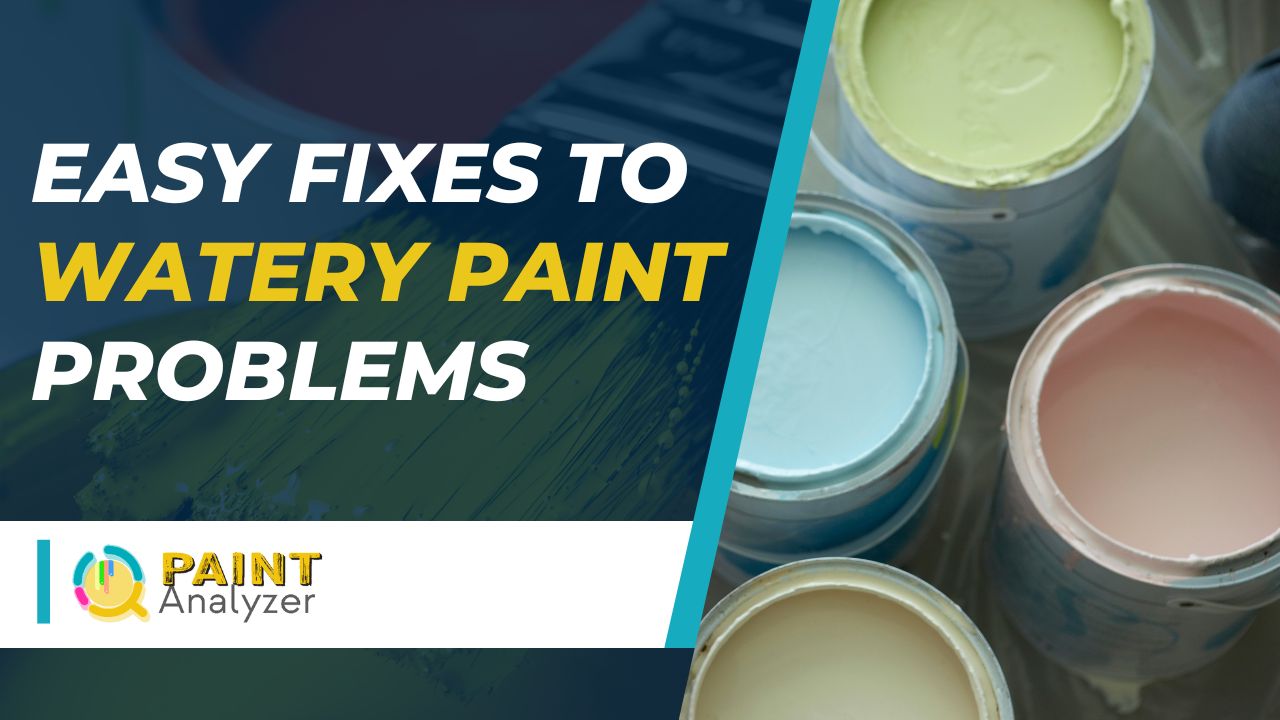If you’ve ever had paint that was too runny and watery to use, you know how frustrating it can be. It’s not only messy, but it also has the potential to ruin your project. That’s why knowing some easy fixes for runny paint is necessary.
You can quickly fix water paint in a few ways. The most successful method is to use paint thinners or thickening agents. You can also thicken it using absorbent ingredients such as sawdust, talcum powder, or cornmeal. The main thing is to understand why your paint is watery and how to avoid it in the future.
In this post, I’ll review some of the best ways to quickly and easily fix runny paint. So, if you’ve been struggling with watery paint, read on for some easy fixes to your problem.

What Causes Paint to Runny?
Paint can go runny for a variety of reasons. Understanding these factors can help you prevent and address issues with paint consistency. Here are some common reasons behind paint becoming runny:
Inadequate Mixing
The most common reason is that the paint was not adequately mixed before use. This can happen when the paint is left to sit for too long or is not stirred vigorously enough.
Temperature Extremes
Paint may go runny because it was exposed to extreme temperatures, either too hot or too cold. For example, paint stored in a hot garage or attic can become runny because the heat has caused the pigments and binders to separate. In the same way, paint that has been kept in a cold place can become runny because moisture condenses when the temperature is too low.
Excess Water Content
Paint can also become runny if there is too much water in it. This is especially true for water-based paints, which are more water-sensitive than other paint forms. When excessive water is added to the paint, the binder becomes too thin, and the pigment becomes watery.
If your paint is going runny, try mixing it well and see if that solves the problem. If not, check the expiration date on the can and make sure it hasn’t expired. By addressing these potential causes, you can ensure the proper consistency of your paint for a successful painting project.
How to Deal With Watery Paint?
Dealing with watery paint can be a tricky problem for painters, but thankfully there are several methods to try. Consider the following strategies if you’re having trouble determining the ideal answer for your issue.
Shaking and Stringing
When paint sits too long, the solid component can separate from the liquid component. In this case, shaking and stringing the paint can help mix the parts back together. To accomplish this
- Put the lid on the can and shake it rapidly for a few minutes.
- Next, use a stir stick to open the lid and thread the paint in circles within the can.
- Replace the cover and shake the can for a few more minutes.
- This should return the paint to its original consistency.
Using Thinner
Thinner liquid can be added to paint to make it less watery. The amount of thinner depends on the type of paint and the desired consistency. However, this process is best if you are using oil-based paint.
- Take an empty container and pour the paint into it.
- Next, apply one-third of the paint thinner.
- Mix the paint and thinner until the desired consistency is reached.
Hydroxyethyl Cellulose
When you are using latex-based paint, hydroxyethyl cellulose can work as a great thickening agent. To use it,
- Arrange a large container and pour the paint into it.
- Then add hydroxyethyl cellulose into the paint in the ratio of 1 part cellulose to 4 parts paint.
- Stir them together for a few minutes until the desired consistency is achieved.
Excess hydroxyethyl cellulose might make the paint overly thick and difficult to apply.
Drying Elements
To make the paint less watery, you can use drying elements like flour, baby powder, cornstarch, gelatin, and paste. The amount of drying element to use depends on the desired consistency.
- Take any dry elements like flour.
- Add a small amount of flour to the paint and mix it.
- Slowly add more flour until the desired consistency is achieved.
Remember that drying elements might affect the color of the paint, so it is crucial to test it out on a small area before painting the entire wall.
What Should I Do if the Paint for the Tree Trunks Turns Runny or Watery?
If the painting tree trunks white turns runny or watery, it could be due to excessive moisture or poor quality paint. To fix this, sand off the affected paint, allow the trunks to dry completely, and then reapply the paint in thin, even coats to ensure proper coverage and drying.
Can Baking Soda Thicken Paint?
Baking soda is a useful ingredient that can be used in many different ways around the house and in the kitchen. However, this does not imply that it is a miracle worker in restoring paint thickness. While baking soda can be used as an additive to thicken paint, it’s not the most effective solution and is not recommended by most professional painters.
Baking soda is a natural material that can be used to make paint thicker. It works by collecting moisture, which aids in the thinning of the paint. This is useful to add texture to your paint job or disguise slight defects. However, you must understand that this should be done in small amounts, as too much baking soda can cause the paint to become too thick and difficult to work.
In addition, baking soda will not help to improve the quality or longevity of your paint job. It may help thicken the paint but won’t make it more durable or resistant. Because of this, most professional painters don’t recommend using baking soda to make the paint thicker.
Best Way to Thicken Paint
The best way to thicken paint is to use a thickener designed explicitly for this purpose. Paint thickeners can help you get the right consistency without making the paint too thick. You can find them at most home improvement stores.
They also help improve the paint’s durability and can make your paint job last longer. So, while baking soda can help thicken paint, it’s not the most effective solution and is not recommended by most professional painters. If you want to thicken paint, using a thickener designed explicitly for this purpose is best.
Tips for Thickening Paint
Conclusion
Runny paint can be a real headache, but luckily, it’s not a permanent problem. By understanding why paint can become runny, you can quickly fix the issue with a few simple steps.
You can quickly get the right paint consistency by adding more thickening agents, drying agents, or hydroxyethyl cellulose. With these tips in mind, you’ll be able to tackle your runny paint problem quickly and easily!

